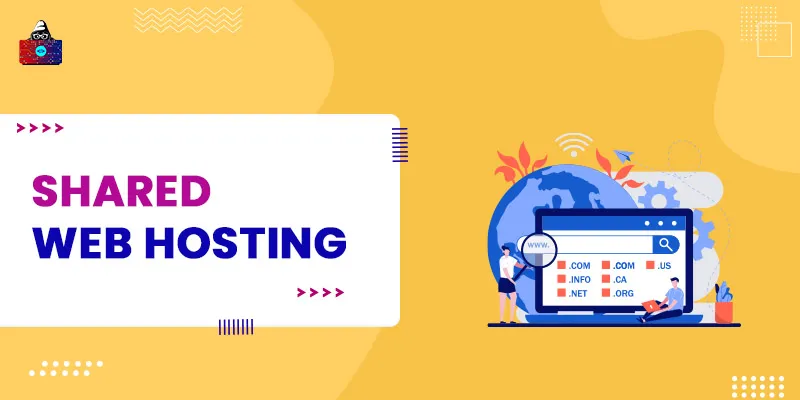If you have ever heard of HTTPS, you must have heard of SSL too. If you are running a website or creating one and are not sure what an SSL certificate is, you need to read this post. We will describe what it is.
You will also get to learn about the most basic topics of the Secure Sockets Layer. Also we will also talk about how SSL works along with its different counterparts, such as TLS and HTTPS, which also work as security protocols to protect your sensitive information.
So let's read this tutorial and find out all about the Secure Sockets Layer protocol.
What is SSL Security?
It stands for Secure Sockets Layer. It is a security protocol that strengthens the connection between a server and a client. The server can refer to the website or web server as well as the browser, but it can also refer to the mail server. And the client is the email client from which you are sending the email, such as Gmail or Outlook .
When an SSL certificate is integrated into your website, it protects sensitive information such as cookies, payment information, phone numbers, and so on. It prevents unauthorized individuals from modifying or capturing sensitive data. It can be a major issue for unauthorized users who are hackers or attackers. However, when the data is transferred through the security protocol, it can be between both servers or both clients and not a client-to-server communication.
An example of client-server communication is when you buy something from an e-commerce website from your internet browser. If it is integrated within that e-commerce website, then the information that you are sharing will be encrypted through various transmission algorithms. Those algorithms will make the information readable to other users as well as the system.
SSL security protocols find extensive use in email, messaging apps, internet browsers , applications, and voice-over IP as well. There is a slight difference between SSL security and an SSL security certificate.
What is an SSL Security Certificate?
It will address the website or certificate owner, and they will provide you with a set of public and private keys that will be used to establish an encrypted connection.
To get the key, you will have to create a certificate signing request, or CSR , on your server, and then you will have to send that file, which we also call the Certificate Authority, to the SSL certificate creditor. The CA will have the public key, and the certificate authority will apply that key to the CSR file to verify if that information matches with your public key or not, and it will create a perfect data structure.
One thing to know is that the private key is always safe, and it is never compromised. During the process, the certificate creditor will provide you with an SSL certificate, and as soon as you get that one, you can install it on your website so that your visitors and existing users see you as a credible and reliable brand. However, the steps for installing the SSL certificate are somewhat different depending on your server.
Just as soon as your browser links the certificate to your server, the TLS or SSL protocol will initiate the encryption for transferring the information. In the encryption process, the transmission control protocol plays the role of the first layer. It works with the SSL protocol to create a secure connection between the server and the client.
TCP creates an extra layer in the Secure Sockets Layer and works on that layer to create a secure connection. Moreover, in this process, other security layers work on top of the SSL layer to make the connection fast and secure. It works in a certain way to ensure your connection is secure from hackers or any third-party services.
What is the Purpose of a Secure Sockets Layer Certificate?
The main purpose of a Secure Sockets Layer certificate is to ensure that the data between the server and the client is transferred securely and that the encryption algorithms are able to make the data unreadable by machines and humans.
The algorithms that are integrated within the certificate protect the private information of the users, including their names, credit card numbers, financial details, addresses, phone numbers, and so on.
How does the SSL Certificate Work?
Here is how an SSL certificate works:
- You open a browser on your computer, and you type a web address with a Secure Sockets Layer certificate in the bar. Your browser will try to join the website.
- The browser asks for a reliable link to the website.
- The server transmits its certificate to the client or the browser.
- Next, the browser verifies the certificate to find out if it should be committed. If the client trusts the certificate, then it will signal it to the server again.
- The server then responds with a signed acknowledgment that SSL encryption will begin.
- Once the browser connects with the server over an encrypted link, data transfer between the client and the server will happen securely.
The way it works is also called the SSL handshake, and it takes a second or less. Hence, it is usually unnoticeable.
HTTPS is shown in the URL for a website protected by a Secure Sockets Layer certificate. If there is no S in HTTP, then it shows that the connection is not secure. You will also notice a padlock icon at the address bar of the website.
The padlock icon shows trust and credibility. When you click on that padlock icon, it will show you the details of the SSL certificate. This includes the domain name, the device on which the SSL certificate has been issued, the certificate authority and their digital signature, any subdomains, the issue date of the certificate, and the public key.
The Secure Sockets Layer certificate has some significant advantages for the website, and that's why it is important to get one.
What is the Value?
A secure sockets layer certificate not only secures user data but also verifies the ownership of the website. This also means that hackers can't attack the site and steal information easily.
If your website asks users for their credit card numbers or any personal details, then it is important to issue an SSL certificate so that this information remains confidential. With the SSL certificate, your website can keep the private details of your users confidential.
Moreover, this proves your website to be credible and authentic. Another important thing about the Secure Sockets Layer certificate you should know is that it is required for your HTTPS connection. When the SSL certificate pairs with http, it will become https, and it gives a green signal to the trustworthiness of your website.
With the SSL certificate, you can secure the following details:
- The users' login credentials.
- Credit card numbers and other financial details.
- Personal information such as full name, date of birth, phone number, and address.
- Health records.
- Property information.
- Legal documents as well as any relevant contracts.
There are various types of SSL certificates, and the features they offer depend on the type. No matter what kind of SSL certificate you install, it will protect your information from start to end.
Types of SSL Certificates
Different types of SSL certificates come with different validation levels. Let's have a look at their brief description.
1. Extended Validation (EV) Certificates
Extended validation certificates are the best and most costly Secure Socket Layer certificates. You can usually find them on transaction-heavy websites, such as e-commerce websites, where online payments are made on a day-to-day basis.
After installing an extended validation certificate, you will see the padlock icon besides the https connection. This certificate will display the owner's name and information about the website. You will have to go through a verification process to create this type of Secure Sockets Layer certificate.
2. Organization Validated (OV) Certificates
Organization-validated certificates are like extended validation certificates. To create this certificate, you will have to go through a set of substantial validation processes. OV SSL shows the owner's information in the address bar and encrypts the sensitive details of the users during an online transaction. Usually, commercial websites use these certificates to ensure the confidentiality of the private details of their users.
3. Domain Validated (DV) Certificates
Domain-validated certificates are not like extended and organization-validated certificates that require a lot of verification processes. Moreover, a DV SSL provides little encryption to your users' data. For these reasons, domain-validated certificates are mostly used on blogs and websites that only provide information to the users and do not involve any online payments or transactions. This type of secure sockets layer certificate is not expensive.
Further, it is easy to create. The padlock icon beside the URL of the website only shows the HTTPS connection for domain-validated certificates and no business names.
4. Wildcard Certificates
If your site has unlimited sub-domains and one base domain, then you can secure it with a wildcard secure socket layer certificate. Wildcard SSL certificates are recommended for websites with multiple domains because you can secure them all without installing individual certificates on each domain. There is an * in the SSL certificate that represents the validation of the sub-domain.
5. Multi-domain Certificates (MDC)
Multi-domain SSL certificates are also used to secure multiple domains that might be a combination of sub-domains and base domains containing different TLDs. But these certificates don't support sub-domains by default. Moreover, you need to use them on each domain individually. You will have to specify the hostnames while obtaining a multi-domain SSL certificate.
You will have to get it first to apply for the SSL certificate on your website. Most of the time, you get a secure sockets layer certificate for free when you opt for hosting services from a hosting provider. In other cases, you will have to buy one and install it on your site manually.
How to Get a Certificate?
You can obtain an SSL certificate from the CA certificate authority. It can be expensive or inexpensive, depending on the level of certification you are opting for. After deciding what kind of certificate you need, you can look for certificate issuers that offer the same level of certification.
Here are the steps that you need to follow to obtain an SSL certificate:
- Set up your server and update your who.is record. It should contain the same information that you are submitting to the CA.
- Now generate a certificate request or CSR from your provider's dashboard per se.
- Next, submit the certificate to the certificate authority, and they will validate your domain and the information that you have provided.
- The CA will verify the certificate and return the copy to you. Finally, you can install it on your website.
After getting the certificate, you will have to configure it on your website. Usually, getting the certificate does not require more than a week. Depending on the type of certificate you are looking for, you can choose among the available certificate authorities. You should know that these certificates also have an expiry date.
When does the SSL Certificate Expire?
Your SSL certificate will not stay valid for more than 27 months. This means you can have a certificate for up to two-and-a-quarter years, after which you will have to renew the certificate. The certificate expires because, like any other authentication process, it requires revalidation.
Another reason why there is an expiry period in the Secure Sockets Layer certificate is to ensure that you regularly update the information provided and that it stays as accurate as possible.
Initially, the SSL certificate stayed valid for up to five years, but it was later reduced to two years and three months. When the certificate expires, it will make the site unreachable or display a message to your users stating that the connection to the website is not safe.
Both these factors can reduce your website traffic. Hence, you need to renew your secure sockets layer certificate before it expires.
Conclusion
SSL and TLS are related. TLS stands for transport layer security. In fact, SSL is the antecedent of TLS. SSL was updated into TLS in 1999. Both of them have different versions and ownership. That's why TLS and SSL are not equal. Many people suggest that the Secure Sockets Layer should be discontinued because its 3.0 version has not been updated since 1999, which has resulted in some security vulnerabilities.
But still, SSL plays a considerable role when it comes to authentication, encryption, and data integrity. That's why it is highly recommended that you install an SSL certificate on your website as soon as you can.
![What is SSL? [Definition] A Complete Beginner's Guide](/media/new_post_images/What-is-SSL.webp)




Leave a Comment on this Post